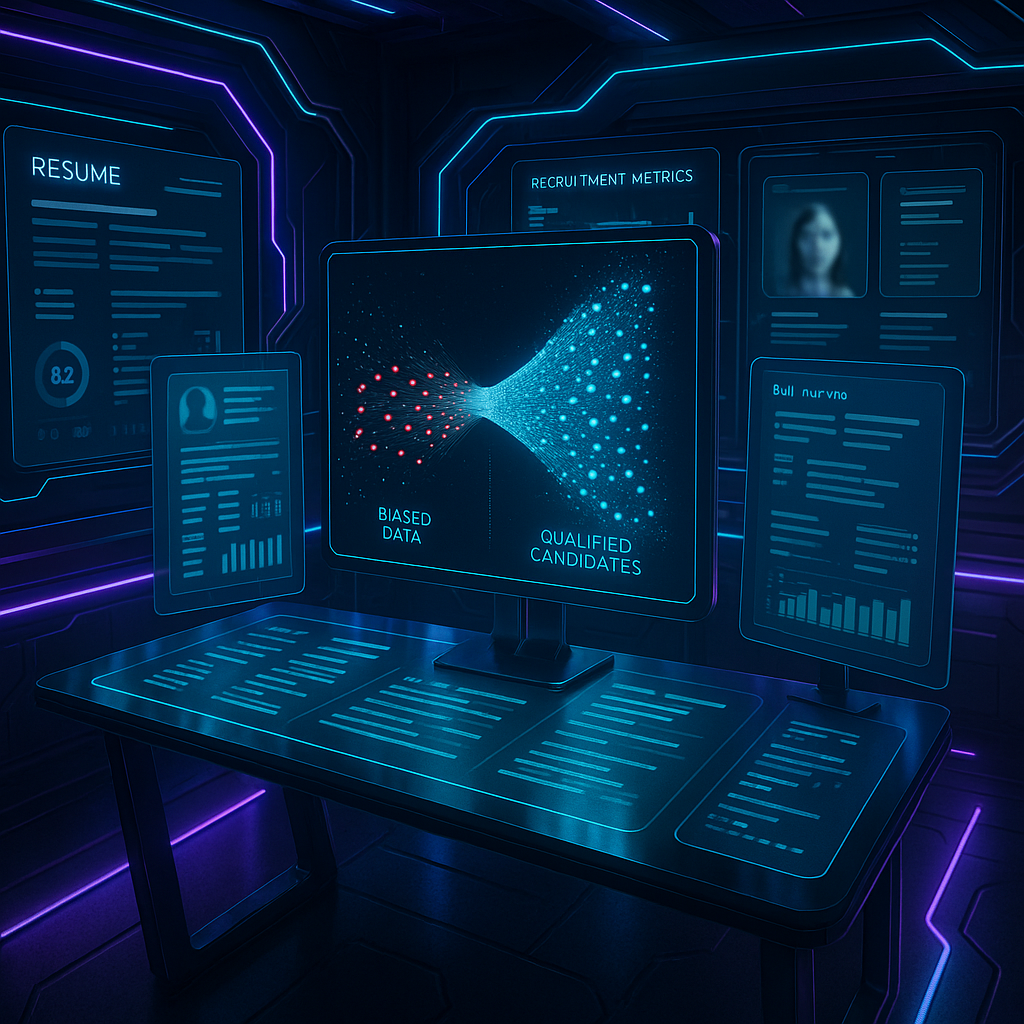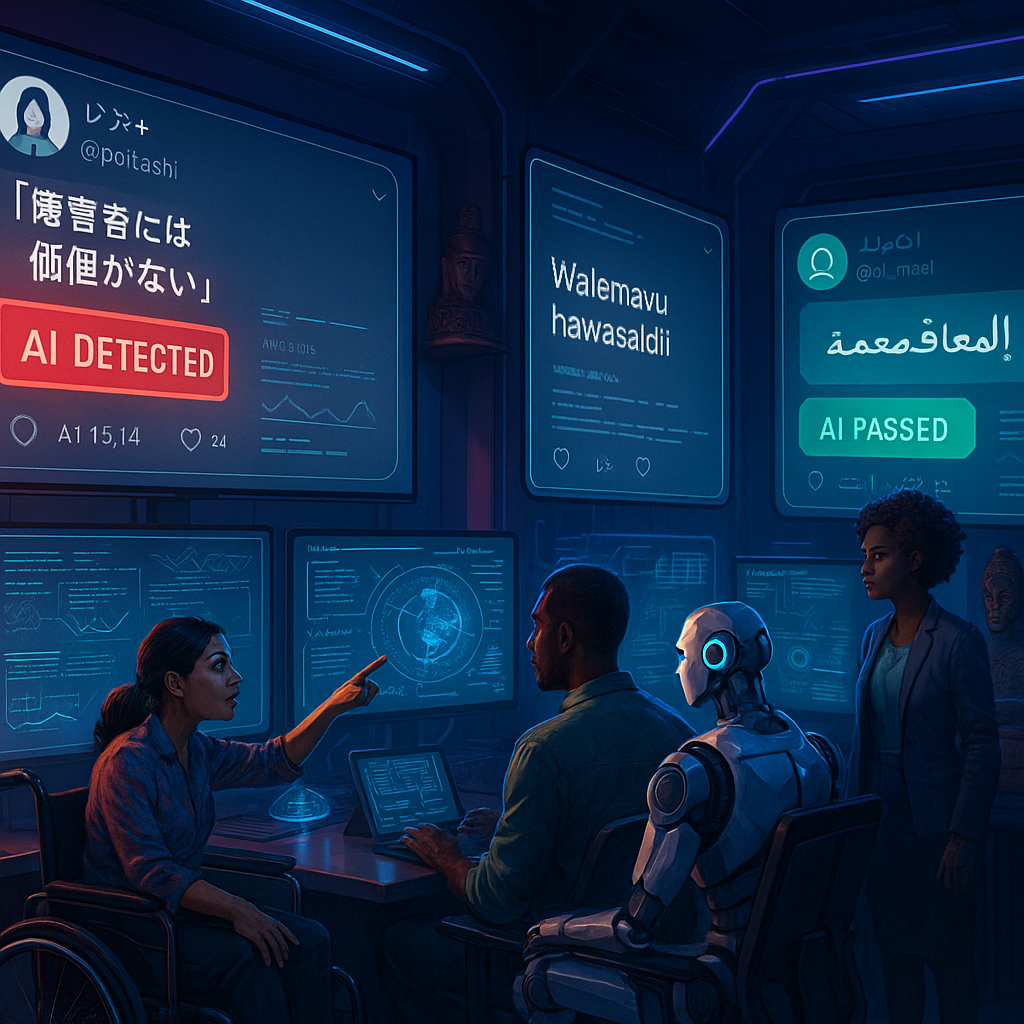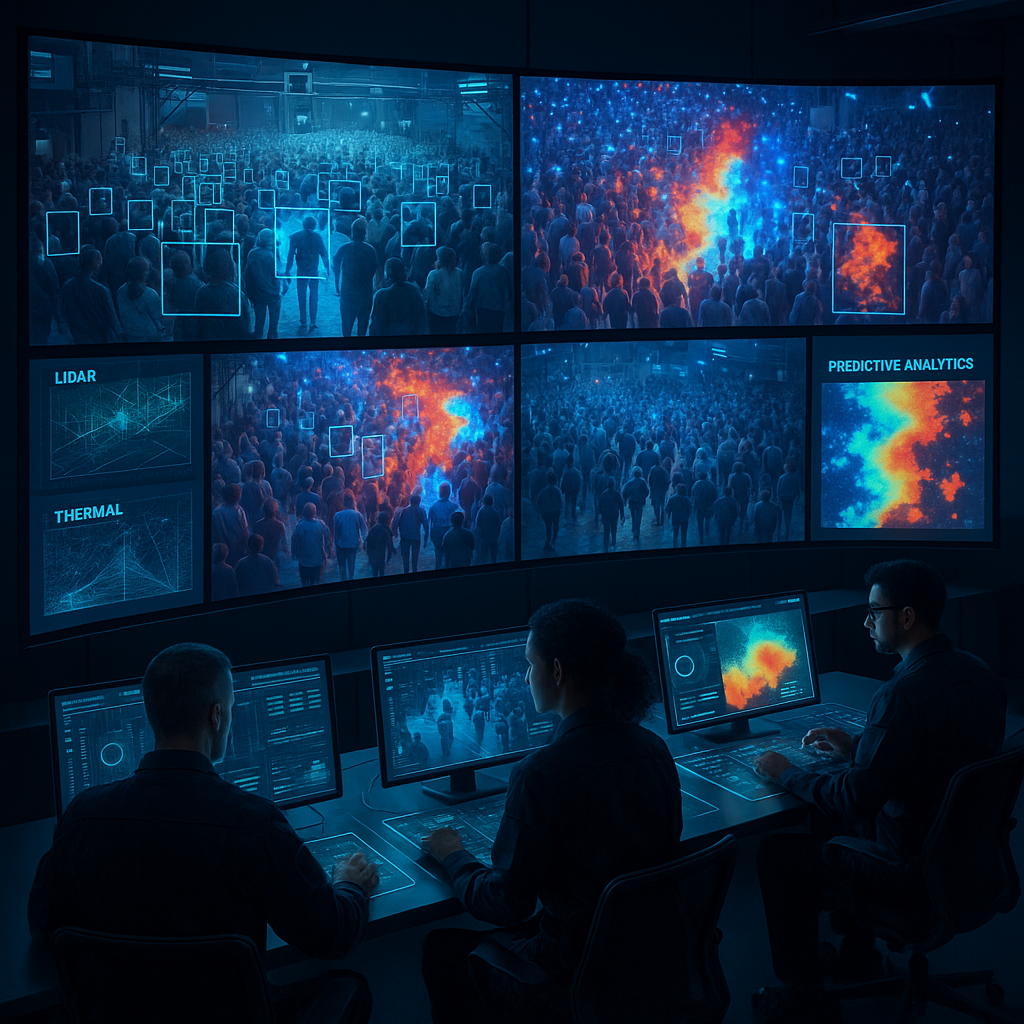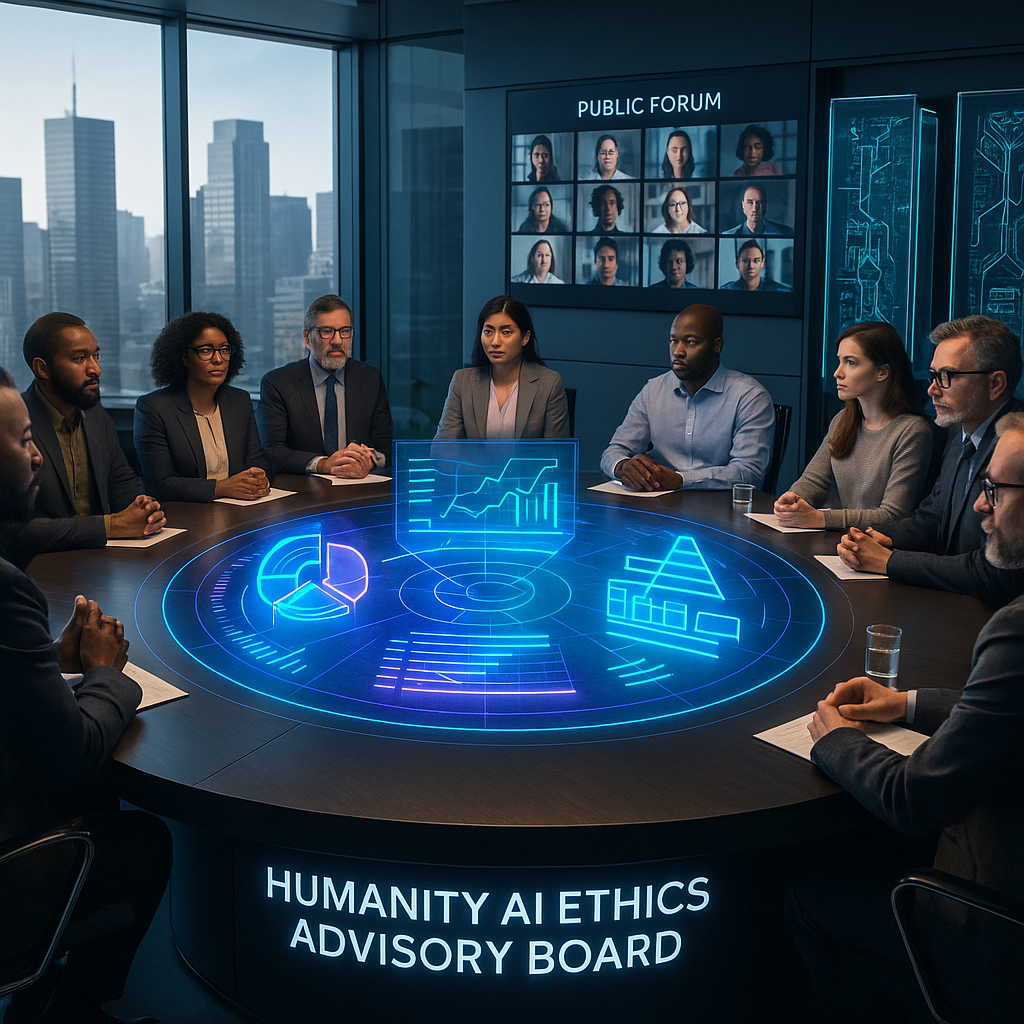Key Takeaways
- AI breaks unconscious bias if you design for it: Purpose-built AI tools have the potential to counteract human bias in recruitment, provided they are intentionally implemented with ethical data sources and subject to regular oversight.
- Automation reclaims hours for high-value human tasks: By delegating repetitive screening and scheduling to AI, recruiters are freed to focus on deeper candidate engagement, relationship-building, and strategic talent planning.
- Objective decision support changes the hiring game: Advanced algorithms analyze candidate data at scale, ensuring that consistent measures are applied and surfacing talent that might otherwise remain hidden in traditional processes.
- Integration unlocks full HR transformation: Seamlessly connecting AI tools with existing HR infrastructure maximizes productivity and operational continuity throughout the recruiting lifecycle.
- Continuous learning fortifies fairness: AI recruitment systems evolve with each hiring round, increasing their ability to spot bias patterns and reinforce equitable decision-making over time.
- Transparent AI builds candidate trust: When candidates see how AI is used and experience clear, fair processes, their confidence in the employer (and in the integrity of outcomes) rises.
As you explore this article, you’ll discover that merging productivity-focused automation with intentional, bias-free design is not just possible but essential for the future of recruitment. Let’s examine actionable strategies that put these insights to work in real-world scenarios.
Introduction
Every résumé that lands on a recruiter’s desk carries more than a list of credentials. Beneath its surface can lie subtle signals that, if unchecked, perpetuate bias. This can potentially shape the future of an organization before an interview even begins. Enter artificial intelligence, promising not only to expose and neutralize these hidden prejudices but also to supercharge the productivity of hiring teams.
The intersection of automation and ethical design is revolutionizing how we approach recruitment. It transforms the process from a treadmill of manual screening into one driven by deep insight and objectivity. With the right AI tools, HR professionals can reclaim their time for what matters most: building authentic connections with candidates and cultivating a truly equitable hiring ecosystem. This article delves into how integrating automation with purpose-built, bias-mitigating AI sets the stage for a more transparent, high-performing, and inclusive recruitment process.
Understanding AI’s Role in Bias-Free Recruitment
AI’s role in recruitment signals a radical shift. It moves away from subjective intuition in favor of scalable, data-driven decision-making. Where human reviewers may unconsciously favor certain education histories, affiliations, or even phrasing, AI systems can focus solely on quantifiable merit. By consistently applying objective criteria to every applicant, these tools diminish the risk of bias creeping in at critical junctures of the hiring process.
Stay Sharp. Stay Ahead.
Join our Telegram Channel for exclusive content, real insights,
engage with us and other members and get access to
insider updates, early news and top insights.
 Join the Channel
Join the Channel
Today’s AI recruitment platforms utilize natural language processing to scrutinize résumés and application materials, filtering candidates based on predetermined, job-relevant skills while purposefully concealing demographic identifiers such as name, age, or gender. Through continual machine learning, these systems adapt to evolving definitions of a “qualified” candidate. They draw from positive hiring outcomes while systematically excluding patterns revealed to be discriminatory.
Essential Components of AI-Driven Recruitment
Modern AI recruitment solutions deploy a constellation of specialized tools, each designed to mitigate bias and enhance decision-making:
- Resume Screening Algorithms: Automatically parse and assess applications according to standardized, job-specific criteria.
- Natural Language Processing: Evaluates job descriptions for inclusive, neutral language that attracts diverse applicants.
- Predictive Analytics: Identifies high-potential candidates based on historical predictors of success, while actively excluding biased variables.
- Video Interview Analysis: Rates candidate responses based on the substance of answers, sidelining visual or vocal stereotypes.
- Skills Assessment Platforms: Objectively test both technical acumen and soft skills, generating actionable data rather than gut-based impressions.
By weaving these components together, organizations can build an interconnected recruitment ecosystem rooted in fair, evidence-based evaluation. This system is responsive not only to business needs but also to societal expectations for equity.
Beyond recruitment, similar AI methodologies are being applied to various industries. In healthcare, for instance, AI-driven platforms ensure fairness in clinical trial selection. In finance, algorithms are used to mitigate biases in loan approvals, and in education, adaptive platforms personalize learning experiences while monitoring for inadvertent inequality. This cross-industry adoption highlights AI’s potential to enhance objectivity and inclusivity wherever important decisions are made.
fair, evidence-based evaluation
Implementing AI Tools for Unbiased Selection
Transitioning from traditional hiring to AI-powered recruitment demands strategic groundwork. Organizations must thoughtfully plan each step to maximize bias prevention and operational impact.
Assessment and Planning
A successful AI implementation begins with a clear-sighted assessment:
- Review Recruitment Workflows: Map out existing processes and identify moments where judgment-based decisions currently occur.
- Analyze Historical Bias Patterns: Examine past hiring data for trends that may point to ingrained, systemic biases.
- Evaluate Technical Readiness: Ensure infrastructure can support the integration of AI-driven systems.
- Plan Integration with HR Systems: Determine how AI tools will interact with applicant tracking systems, onboarding platforms, and other digital HR assets.
- Identify Training Needs: Assess what recruiters and decision-makers need to effectively collaborate with AI recommendations.
This methodical planning uncovers not only risk points for bias but also opportunities to enhance the overall recruitment experience.
Tool Selection and Integration
When choosing and integrating AI recruiting tools, several principles should guide decision-makers:
- Transparency: Select vendors committed to sharing how their models address and mitigate bias, and who enable meaningful audit trails.
- Customization: Choose tools that can flexibly adapt to your organization’s unique role requirements and DEI (diversity, equity, and inclusion) objectives.
- Data Security: Confirm the platform’s compliance with privacy laws and standards for safeguarding candidate information.
- Scalability: Opt for solutions that can evolve alongside organizational growth and changing recruitment volumes.
- Support and Change Management: Ensure robust training resources, clear documentation, and a customer support structure for smooth adoption.
Roll out should proceed incrementally, beginning with pilot phases that feature thorough testing, iterative feedback, and continuous calibration.
Beyond HR, similar implementation strategies are driving change elsewhere. In healthcare, phased AI rollouts help hospitals validate diagnostic tools before full patient integration. In legal services, pilot programs test contract review algorithms to ensure accuracy and fairness. These cross-industry examples stress the importance of deliberate, data-driven adoption for any organization investing in advanced AI.
Best Practices for AI-Enhanced Recruitment
Maintaining Human Oversight
Even the most advanced AI tools must be complemented by human expertise. While technology automates and standardizes, human recruiters offer context, empathy, and ethical judgment that cannot be fully replicated by code.
Organizations should:
- Audit AI Outcomes: Schedule regular reviews of AI-driven recommendations to detect signs of emerging or overlooked bias.
- Retain Human Review for Exceptions: Keep decision-makers involved in edge cases and nuanced scenarios beyond algorithmic reach.
- Monitor System Performance: Track system behavior and address discrepancies or anomalies swiftly.
- Continuously Update Selection Criteria: Adapt AI decision logic as business goals and definitions of “fit” evolve.
This symbiotic approach (human guidance supported by AI’s consistency) guards against overreliance on technology and ensures recruitment remains both precise and ethical.
Performance Monitoring and Optimization
Sustaining success requires vigilant performance tracking and a culture open to improvement:
Stay Sharp. Stay Ahead.
Join our Telegram Channel for exclusive content, real insights,
engage with us and other members and get access to
insider updates, early news and top insights.
 Join the Channel
Join the Channel
- Measure Success Metrics: Assess not only efficiency gains like time-to-hire, but also diversity, retention, and candidate experience outcomes.
- Solicit Stakeholder Feedback: Collect input from hiring managers, recruiters, and candidates about the perceived fairness and transparency of the new system.
- Analyze Trends: Identify patterns in AI-generated recommendations and correlate them with organizational hiring goals.
- Iterate Regularly: Use quantitative and qualitative findings to refine algorithms, parameters, and broader recruitment strategies.
- Document Impact: Maintain clear records of progress, both to justify investments and to meet evolving compliance standards.
Monitoring and optimization are not just post-implementation luxuries; they are prerequisites for building trust within the organization and among potential hires.
These practices echo those in fields like environmental science, where predictive models are routinely recalibrated based on outcomes, and in marketing, where campaign data informs future targeting strategies.
Challenges and Solutions in AI-Driven Recruitment
Common Implementation Challenges
AI-driven recruitment introduces both promise and complexity, sometimes surfacing new obstacles:
- Data Quality Issues: Historical hiring data may be rife with bias, inadvertently shaping early algorithmic decisions.
- Integration Complexity: Legacy HR systems can pose technical barriers to seamless AI adoption.
- User Adoption Resistance: Teams may be wary of automation, fearing reduced agency or loss of the “human touch.”
- Algorithmic Opacity: Technical intricacies may obscure how or why decisions are made, fueling skepticism.
- Investment Management: Implementation often requires significant upfront resources and ongoing maintenance costs.
These hurdles are not unique to HR. Similar barriers confront sectors ranging from healthcare (integrating AI diagnostic tools) to education (adopting machine-powered adaptive learning).
Overcoming Technical and Cultural Barriers
Addressing these challenges requires an integrated approach that blends technical preparation with cultural change:
- Provide Comprehensive Training: Equip recruiters with the skills to interpret AI recommendations and intervene judiciously where required.
- Develop Accessible Documentation: Create resources demystifying system functionality and bias mitigation features.
- Foster Feedback Loops: Facilitate regular forums for employees to share experiences and surface concerns.
- Respond Promptly to Issues: Demonstrate that leadership takes concerns seriously and addresses them transparently.
- Showcase Successes: Share early wins and measurable improvements to build organizational momentum and buy-in.
Lessons can be drawn from other industries. In finance, for instance, transparent dashboards and regulatory audits help institutions gain user trust in AI-powered credit assessments. Healthcare organizations turn patient feedback into iterative system improvements, aiding adoption and accuracy. These examples reinforce the need for visible leadership, ongoing education, and a willingness to iterate.
Conclusion
AI-powered recruitment signals much more than a leap in technical efficiency. It is a call to reimagine what fairness, opportunity, and human potential mean in the contemporary workplace. By embracing sophisticated algorithms (carefully designed and vigilantly overseen), organizations can embed equity and objectivity into the very core of their hiring processes, surfacing talent that might otherwise remain unseen.
However, the journey toward truly fair recruitment is ongoing. AI’s promise will be fulfilled only with continuous investment in oversight, algorithmic transparency, and a culture that prizes ethical progress as much as business outcomes. The most competitive and resilient organizations will be those that not only deploy “alien minds” but also shape them with purpose, nurturing trust and diversity with every hiring decision.
Looking forward, the future of recruitment will be defined by adaptability and intentionality. The organizations that anticipate shifts in technology, update their ethical frameworks, and invite dialogue across business, legal, healthcare, and educational domains will lead in crafting truly inclusive workplaces. The question is no longer if you will harness these tools, but how wisely and humanely you will guide them. The age of automation in recruitment is already here. Now is the moment to shape it to reflect our highest values and ambitions.





Leave a Reply